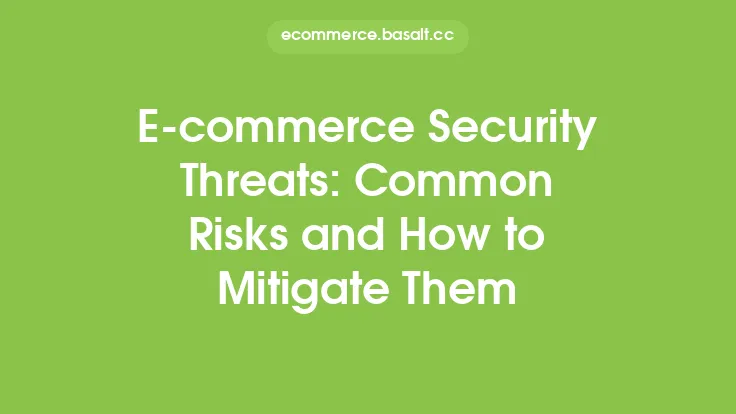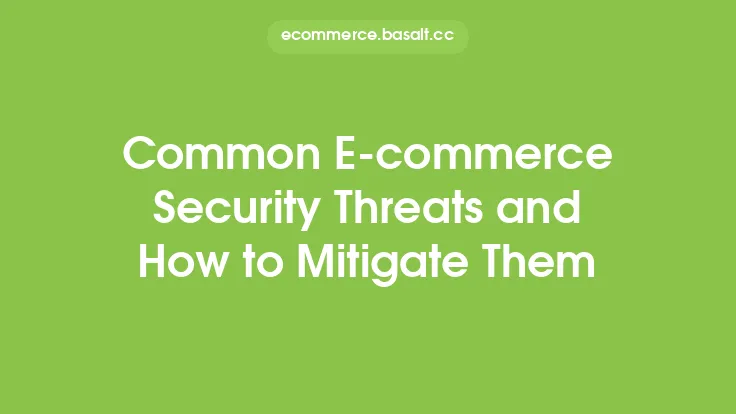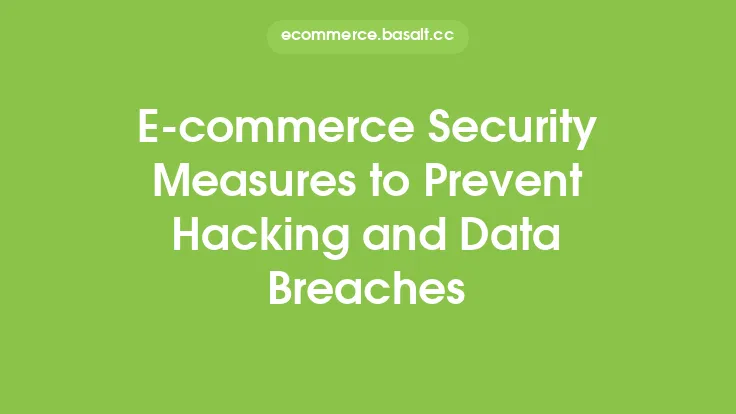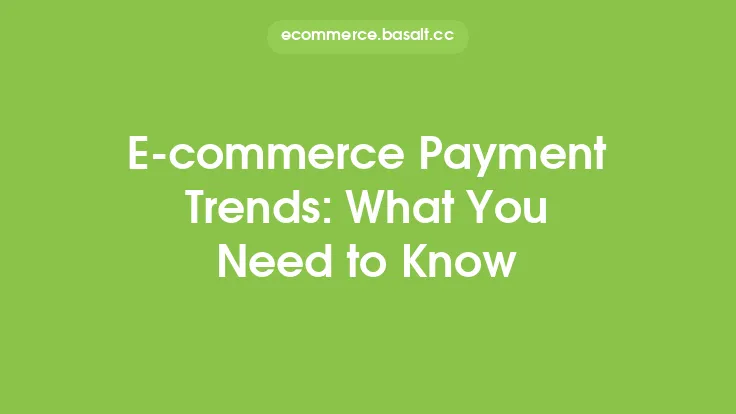As an e-commerce business owner, one of the most significant concerns you may have is the risk of credit card fraud. Credit card fraud can result in significant financial losses, damage to your reputation, and a loss of customer trust. However, there are several steps you can take to prevent e-commerce credit card fraud and protect your business.
Understanding Credit Card Fraud
Credit card fraud occurs when an individual uses a credit card or credit card information to make unauthorized purchases or transactions. This can happen in various ways, including through stolen or lost credit cards, phishing scams, or data breaches. In e-commerce, credit card fraud can occur when a customer's credit card information is stolen or compromised during the checkout process.
Implementing Secure Payment Processing
One of the most effective ways to prevent e-commerce credit card fraud is to implement secure payment processing. This includes using a secure payment gateway, such as PayPal or Stripe, that uses encryption and tokenization to protect credit card information. You should also ensure that your payment processing system is compliant with the Payment Card Industry Data Security Standard (PCI DSS), which is a set of security standards designed to protect credit card information.
Using Address Verification System (AVS)
Another way to prevent e-commerce credit card fraud is to use an Address Verification System (AVS). AVS checks the customer's billing address against the address on file with the credit card issuer to ensure that they match. This can help to prevent unauthorized transactions and reduce the risk of credit card fraud.
Implementing Card Verification Value (CVV)
Card Verification Value (CVV) is a security feature that requires customers to enter a unique code, usually found on the back of the credit card, to complete a transaction. This can help to prevent unauthorized transactions and reduce the risk of credit card fraud.
Monitoring Transactions
Monitoring transactions is an essential step in preventing e-commerce credit card fraud. You should regularly review your transactions to identify any suspicious activity, such as multiple transactions from the same IP address or transactions that exceed a certain amount. You can also use machine learning algorithms to detect and prevent suspicious transactions.
Educating Customers
Educating customers on how to prevent credit card fraud is also essential. You should provide customers with information on how to protect their credit card information, such as using strong passwords, avoiding phishing scams, and regularly monitoring their credit card statements.
Keeping Software Up-to-Date
Keeping your software up-to-date is crucial in preventing e-commerce credit card fraud. You should ensure that your e-commerce platform, payment gateway, and other software are updated with the latest security patches and updates. This can help to prevent vulnerabilities that can be exploited by hackers.
Using Tokenization
Tokenization is a security technique that replaces sensitive credit card information with a unique token or symbol. This can help to prevent credit card information from being stored or transmitted in plain text, reducing the risk of credit card fraud.
Implementing 3D Secure
3D Secure is a security protocol that requires customers to complete an additional verification step, such as entering a password or code, to complete a transaction. This can help to prevent unauthorized transactions and reduce the risk of credit card fraud.
Conducting Regular Security Audits
Conducting regular security audits is essential in preventing e-commerce credit card fraud. You should regularly review your security protocols and procedures to identify any vulnerabilities or weaknesses that can be exploited by hackers.
Providing Clear Refund and Cancellation Policies
Providing clear refund and cancellation policies can help to prevent e-commerce credit card fraud. You should clearly outline your refund and cancellation policies, including the process for requesting a refund or cancellation, and the timeframe for processing refunds.
Building Trust with Customers
Building trust with customers is essential in preventing e-commerce credit card fraud. You should provide customers with a secure and transparent checkout process, and clearly outline your security protocols and procedures. You can also use trust badges, such as SSL certificates and security seals, to demonstrate your commitment to security.
Staying Up-to-Date with Industry Developments
Staying up-to-date with industry developments is crucial in preventing e-commerce credit card fraud. You should regularly review industry news and updates, and attend conferences and workshops to stay informed about the latest security threats and trends.
Conclusion
Preventing e-commerce credit card fraud requires a multi-faceted approach that includes implementing secure payment processing, using AVS and CVV, monitoring transactions, educating customers, keeping software up-to-date, using tokenization, implementing 3D Secure, conducting regular security audits, providing clear refund and cancellation policies, building trust with customers, and staying up-to-date with industry developments. By following these steps, you can help to prevent e-commerce credit card fraud and protect your business.





